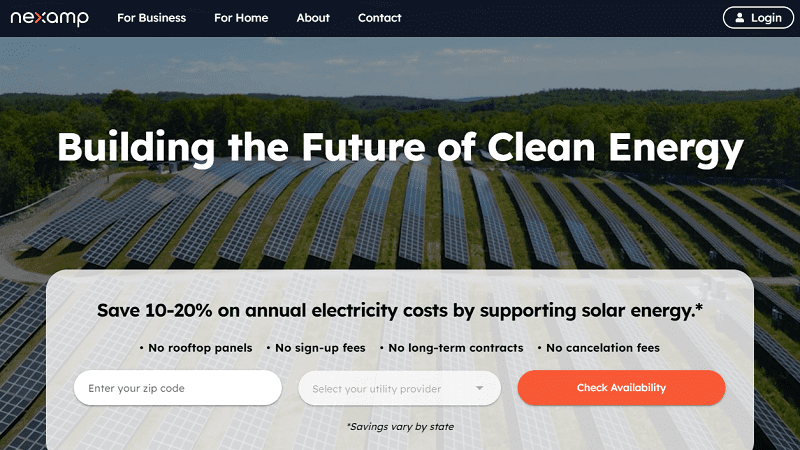
Nexamp, a national clean energy leader paving the way for a just, secure, and resilient energy future, today announced more than $400 million in tax equity and debt commitments led by U.S. Bancorp Impact Finance and Mitsubishi UFJ Finance Group, respectively. This latest round of financing will support the creation of 49 solar and battery storage projects in six states spanning the Northeast, Mid-Atlantic, and Midwest and enable more than 25,000 households to receive a combined $6.5 million in estimated annual electricity bill savings. As Nexamp works to develop these community solar facilities across all six states, this investment will also create a total of 2,390 construction and operations jobs to support local economic growth in addition to expanding solar access for rural and underserved communities. As the U.S. continues to build its solar supply chain, these jobs will help accelerate the nationwide transition to a greener economy.
Community solar, or shared solar, enables any local resident to subscribe to a solar farm and receive credits on their monthly utility bill to reduce their annual electric costs. The projects, which have a total generating capacity of nearly 250 MWdc and can power up to 40,000 households, are sited in predominantly rural communities in Maine, Maryland, Massachusetts, New York, Minnesota, and Illinois, to help eliminate barriers associated with installing solar panels.
“In order for the U.S. to overcome its reliance on fossil fuels and an outdated power grid, we must invest in affordable and sustainable clean energy solutions that are accessible to all Americans, no matter where they live,” said Nexamp CEO Zaid Ashai. “Nexamp is expanding its reach to meet the critical needs of communities, especially those that are historically underserved, ensuring they’re represented in the transition to a resilient, dynamic and clean energy grid.”
Nexamp’s financing effort was bolstered by the Inflation Reduction Act, which extended and expanded the investment tax credits for clean energy resources, and sets the stage for accelerated solar growth in the coming decade. Beginning in 2023, newly established bonus credits will ensure that low-income and other traditionally marginalized communities will more equitably share in the direct benefits and economic growth spurred by the IRA, the Biden Administration’s landmark climate bill.
“We believe everyone has a role to play in creating a sustainable future and investing in projects like these is one of the ways we can support the transition to a greener economy,” noted Jacob Gibson of U.S. Bancorp Impact Finance. “We’re excited for the opportunity to expand our relationship with a leader in the community solar space, and look forward to the social, environmental and economic benefits these projects will provide in and around the communities where they’re located.”
“We are very pleased to have successfully closed these recent financings for Nexamp. Community solar projects are playing a vital role in the energy transition, providing a diverse set of communities with access to participate in this societal effort. Nexamp is a recognized market leader with a robust commitment to its customers, and we look forward to continuing to support its impactful growth,” said Takaki Sakai, Managing Director of MUFG.
As the largest U.S. owner of community solar assets, Nexamp has been at the forefront of efforts to make clean energy affordable, accessible, and profitable for all Americans. By handling all aspects of a projects’ lifecycle in-house—from development, engineering, and construction through operations and customer management—Nexamp is able to bring rapid renewable energy deployment and high-quality jobs to the communities it serves. In 2015, Nexamp launched the first open-to-all community solar program that eliminates credit checks, up-front fees, and long-term commitments to help customers save an average of 10-20% on annual electricity costs. Today, Nexamp services over 60,000 customers and has a portfolio of more than 1 gigawatt of generating capacity capable of powering over 155,000 households, with several more gigawatts of capacity in development across approximately 20 states.









